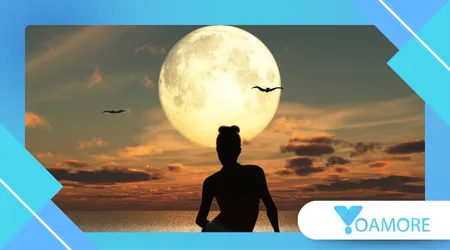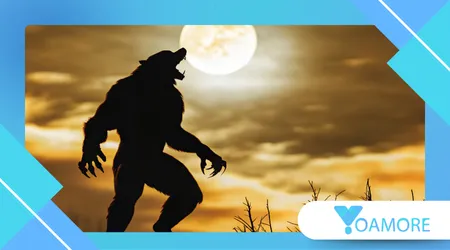Fear of the Full Moon: Myths and Legends Across Cultures

Fear of the Full Moon has fascinated — and terrified — people across civilizations for centuries.
Anúncios
From mythic transformations to spiritual awakenings, the full moon has been wrapped in a tapestry of mystery, superstition, and wonder.
In this article, we’ll explore the cultural origins of lunar fears, the symbolism behind them, and why these ancient narratives still resonate today.
Summary:
- The psychological and cultural roots behind lunar fear
- Global myths and legends surrounding full moons
- Real-world consequences of lunar superstitions
- Science vs. belief: separating fact from fiction
- Why full moon fear persists even in modern times
- How full moons impact human behavior and perception
- The digital age and the rise of modern moon rituals
A Light in the Darkness: Why the Full Moon Was Feared
For early civilizations, the full moon wasn’t just a celestial event — it was a powerful omen.
Anúncios
Ancient societies lacked the tools to explain astronomical cycles, so a glowing orb dominating the sky felt otherworldly.
The fear of the full moon thus became a symbol of uncontrollable and mysterious energy.
In Greco-Roman medicine, moonlight was thought to influence mental states. The word “lunatic” has roots in the Latin “luna,” revealing how intertwined fear and celestial cycles became in both language and life.
This belief in lunar-induced madness lasted for centuries, even influencing 18th-century medical practices.
Across many ancient societies, the full moon was associated with the supernatural. The stark brightness of the night seemed to reveal things normally hidden, stirring primal anxieties.
And without the comfort of electric light, shadows and imaginations often filled in the blanks.
+ The Language That Has No Verbs: Welcome to Riau Indonesian
Global Legends: From Werewolves to Moon-Eating Demons

Travel the world, and you’ll find countless cultures with legends tied to the full moon.
In Northern and Central Europe, tales of werewolves — humans cursed to transform into beasts during a full moon — reflect deep-seated fears of losing control.
While originally tied to pagan beliefs, these myths were later reinforced by Christian narratives about sin and punishment.
In South American indigenous communities, full moon nights are still seen as spiritually charged. Among the Shipibo-Conibo of Peru, moonlight is believed to awaken spirits who walk between worlds.
Stories passed through generations warn against night travel during full moons, citing disappearances and illness as consequences.
Meanwhile, ancient Chinese folklore tells of cosmic battles during lunar eclipses.
During these rare full moon events, mythical dragons were believed to swallow the moon, prompting people to bang drums and make noise to chase the beast away.
The fear of the full moon may have varied expressions across geographies, but one thing remains consistent: it is viewed as a time when the ordinary world is touched by something beyond human comprehension.
Also Read: How Dreams Are Interpreted as Omens Around the World
Human Behavior and Lunar Illusions
In today’s world, one might expect such beliefs to fade. Yet, studies suggest the full moon still influences behavior, even if not in the ways ancient myths describe.
While many scientific reports debunk direct effects of the moon on mood or crime, perception tells a different story.
A 2023 meta-analysis published in Psychological Bulletin reviewed over 40 studies and concluded that while most effects were not statistically significant, belief itself had tangible impact.
People expecting chaos or insomnia during full moons were more likely to report stress or poor sleep quality.
Hospitals and emergency workers often feel the surge. A senior ER nurse from Toronto General shared in a CBC News interview that full moon shifts tend to be more chaotic, even if records don’t always back it up numerically.
This contradiction between data and experience fuels the persistence of the myth.
Our brains are built to seek patterns. When something unusual happens on a full moon night, we’re more likely to remember and attribute it to the moon’s influence.
It’s a classic case of confirmation bias reinforced by cultural expectations.
+ Cultural Beliefs About the Moon: From Werewolves to Harvest Rituals
Why Myths Persist in a Rational Age
Despite modern education, beliefs around the fear of the full moon continue. But why? The answer lies in emotion, storytelling, and cultural reinforcement.
Think of how many movies use full moons as backdrops for horror or suspense. From An American Werewolf in London to The Blair Witch Project, full moons symbolize an impending shift from order to chaos.
This repetition conditions viewers to associate lunar brightness with dread.
Children’s books and songs often reinforce these ideas too, embedding lunar fear early in life. It’s not just a matter of tradition but a form of subconscious emotional priming.
Even in spiritual circles, full moons are seen as times of heightened energy. Social platforms like TikTok and YouTube are filled with rituals, from “moon water” to guided full moon meditations.
As Pinterest Predicts 2024 revealed, searches for “full moon manifestation” grew by 42%, showing a cultural pivot toward spiritualism wrapped in modern branding.
Explore NASA’s Lunar Science for insights grounded in astronomy and physics, cutting through myths with verified knowledge.
Cultural Storytelling as Social Survival
It’s important to recognize the social function of these stories. In ancient communities, storytelling wasn’t entertainment — it was survival.
Legends about the dangers of the full moon taught people when to stay home, avoid predators, or be alert to danger.
Consider the Maasai of Kenya, whose oral traditions associate full moons with lion attacks.
Recent ecological data supports this: a study from the Journal of Animal Ecology (2022) found that lion hunting success rates increased during full moon nights due to better visibility.
In rural Polish folklore, elders often warned children to stay indoors during full moons to avoid evil spirits.
While the spirits themselves may have been symbolic, the underlying lesson was real: unfamiliar night-time excursions could be risky.
This cultural knowledge became embedded in ritual and routine. And once internalized, fear became a self-reinforcing behavioral pattern.
Real-World Perceptions and Data
Though we now have access to comprehensive data, our instincts often override it. Let’s take a look at actual figures.
| Source | Data Analyzed | Conclusion |
|---|---|---|
| BMJ (2023) | 13,000+ hospital records | No link between full moon and psychiatric cases |
| NIMH (2022) | Emergency room visits in 20 U.S. cities | Incidents evenly spread across lunar phases |
| Journal of Animal Ecology (2022) | 5-year lion activity tracking | Increase in lion attacks during full moon |
So while medical emergencies don’t spike with lunar cycles, wildlife patterns — and our reactions to them — show a more nuanced reality.
The Full Moon in the Modern Imagination
In today’s hyper-connected world, myths don’t disappear — they evolve. Algorithms, not campfires, now spread lunar lore.
A single TikTok about a “bad moon” energy can reach millions in hours. The viral nature of digital superstition adds velocity to age-old beliefs.
One interesting example is the increasing number of full moon-themed wellness events in urban centers.
Yoga classes under the moon, sound baths, and astrology circles have become popular across cities like Los Angeles, Sydney, and São Paulo.
These activities often blend ancient symbolism with modern mindfulness, reflecting our continued need for ritual.
And while the fear of the full moon might not lead people to shutter their homes anymore, it does inspire behaviors.
From sleep disruption to heightened emotional reflection, people report feeling “off” during full moons — even when unaware that the moon is full.
Final Thoughts: Between Shadow and Science
Whether driven by superstition, spirituality, or psychological association, the full moon continues to captivate human attention.
The fear of the full moon is no longer about mythical beasts or curses. Today, it’s about emotional shifts, subconscious expectations, and the persistence of stories.
In this sense, the moon becomes a mirror. We project our inner fears onto its glow, reflecting centuries of myth and modern anxieties in one luminous arc.
If you want to dive deeper into how lunar myths have shaped human history, check out this Smithsonian article on the moon’s cultural legacy.
It offers a compelling exploration grounded in historical and anthropological research.
FAQs
Is there any scientific evidence that full moons affect human behavior?
Not directly. Major studies show no significant correlation between full moons and behavioral spikes, though perception and cultural conditioning can still influence how people feel.
Why do hospitals and police departments often report full moon chaos?
This could be due to confirmation bias and anecdotal recall. People remember chaotic nights that coincide with full moons and ignore quiet ones.
Are there cultures that celebrate rather than fear full moons?
Yes. In India, the full moon (Purnima) is often seen as sacred, associated with festivals, fasting, and spiritual cleansing.
Do animals behave differently during full moons?
Some species, such as lions and certain nocturnal animals, do show behavioral changes due to increased visibility, which supports survival strategies for hunting or evading predators.
Why do these myths still matter in 2025?
Because myths shape identity and behavior. Even in an age of data, storytelling provides emotional context that facts alone can’t replace.
